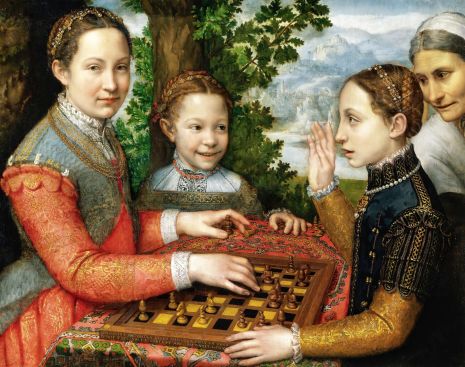Christine of France
Note by Florine Vital-Durand, 2015
| Title(s) | Duchess of Savoie, Regent of Savoie |
| Spouse | Victor-Amédée, Ist of Savoie |
| Also known as |
Chrestienne ou Chrétienne de France |
| Biography | |
| Birth | February 10, 1606 |
| Death | December 2, 1663 |
| Biographical entries online : | Christine de France – dictionnaire des femmes de l’Ancienne France de la SIÉFAR |
Christine de France, the daughter of Henri IV of France and Marie de’ Medici, was born in Paris on10 February 1606. Richelieu and Louis XIII − who understood Savoy (known as “gateway to the Alps”) could become the key for solving their struggle against the influence of the Habsburgs in Italy − married Christine to Victor Amadeus I (1587-1637) in 1619, who became the Duke of Savoy in 1630, following the death of Charles-Emmanuel I. The Duchess was related to some of France’s greats: Louis XIII; Gaston, the Duke of Orleans; Elisabeth, Queen of Spain in 1621 and Henriette, Queen of England in 1625. Dreaming of a royal title of her own, Christine supported her husband in his quest for the crown of Cyprus, arguing that her family had matrimonial ties, dating back to the fifteen-century, with the House of Lusigan that reigned on the island. She had the same ambitions (which were sometimes thwarted) for her children: Louise was married to her uncle Maurice of Savoy, Marguerite to the Duke of Parma, Adelaide to the Duke Elector of Bavaria and Charles-Emmanuel to the niece of Louis XIII, Françoise d’Orléans, who died shortly after their union. Charles-Emmanuel then married Jeanne-Baptiste de Nemours. Following the death of Victor Amadeus in 1637, Christine became regent in the name of her eldest son, François-Hyacinthe, who died a year later, and then again in the name of the younger Charles-Emmanuel.
At the court of Turin, Madame Royale (whose motto was “More firmness than brilliance”) ensured a long reign which went beyond the official end of her regency, to last until her death in 1663. She led a skillful approach to politics, despite being torn between French and Spanish claims on Savoy during a time of internal fragility due to the minority of the prince and the division within the family between her two brothers-in-law (Prince Thomas, who was then affiliated with Spain, and Cardinal Maurice who sided with France). Christine was aided by a devoted advisor, Phillipe d’Agilé; a poet, an intellectual and an expert politician whom Richelieu had imprisoned. Her hardest challenge came from her brothers-in-law, who contested the legitimacy of her regency. As such, a terrible civil war erupted (1638-1642) between the Madamisti and Principisti clans; but after some compromise it was eventually resolved to her advantage. In 1648, after getting wind of a plot against her, Christine succeeded in a real coup d’état: she put the now of age Charles Emmanuel II in power, ousting his uncles and asserting her role as the absolute mistress of the duchy. Despite some fighting against Spain, a relatively peaceful relationship was maintained until the Peace of the Pyrenees (1659), which established the supremacy of France with Savoy as an ally.
The Duchess, who was immersed in French culture, ran one of the most accomplished European courts in Turin, where she put into practice a regalian approach to arts. Following the tradition of the duke’s lineage, she worked to glorify the capital and the surrounding residences of Délices. She also gave sumptuous receptions, which served as models across Europe. One such success was that of Valentino Castle on the banks of the river Po, one of the Duchess’s favourite pleasure grounds, which was transformed into a symbol of power by Aglié and Emmanuel Tesauro. Finally, on a religious level, she was an active and devout Catholic.
This woman who was both maternal and tenacious, does not solely owe her success to her ability to resist the pressures placed on her by Richelieu or her brothers-in-law. Her role as Head of State had four major consequences for the Duchy: a lasting alliance with France and its subsequently ensured relative independence; the consolidation of a ‘tempered’ absolutism accompanied by a prestigious political approach to arts which established her as a European influence; the strengthening of both the administrative and state structures, which replaced the role of the Duchy as a buffer state with that of an intermediary state; and finally, regarding peerage, her rule accelerated the acquisition of a royal title, obtained by Victor Amadeus II, King of Sicily (1713) and Sardinia (1720). This Frenchwoman, turned Piedmontese, died in Turin on December 27, 1663.
Christine de France’s regency was misinterpreted, if not forgotten, by French historiography which gave a distorted view of it, except in a handful of dictionary entries. Far from the emphatic accounts of historiographers of the dynasty, recent Savoy histories only briefly mention her role. She is now the subject of new French publications, initiated by Giuliano Ferretti. However, regarding publications in Italian, in addition to monographs devoted to her, the scholarship on this period includes several historical, artistic and literary studies on the duchess’s work and on her court.
Translated by Helen Garner. Edited by Séverine Genieys-Kirk


